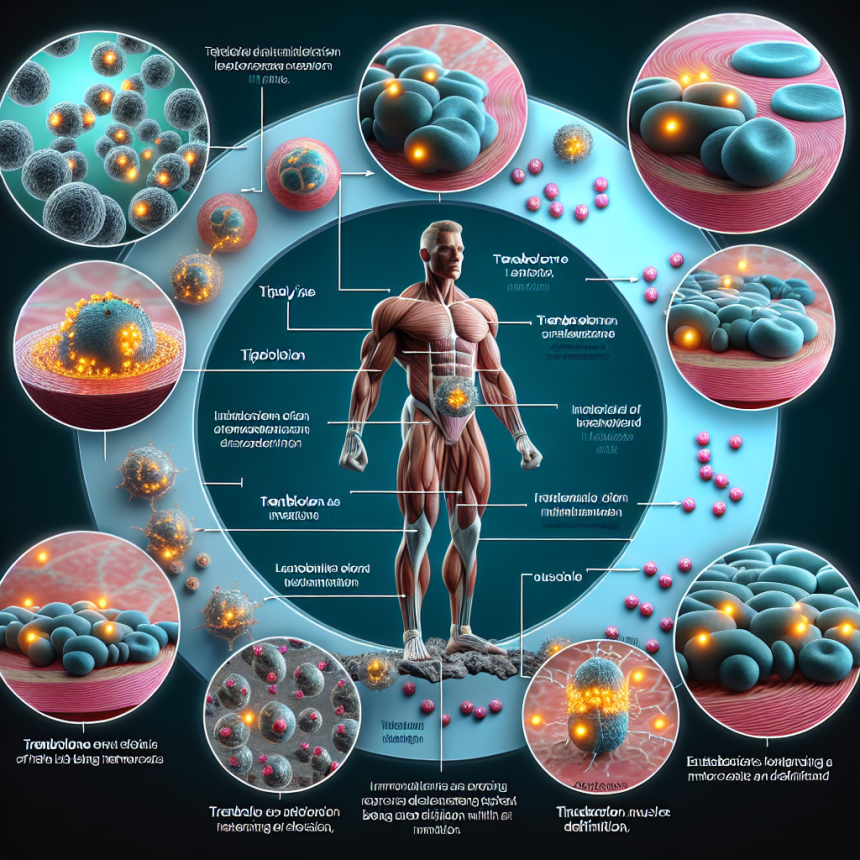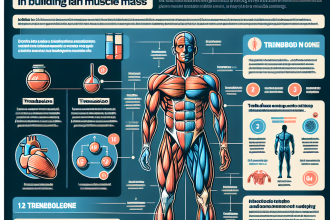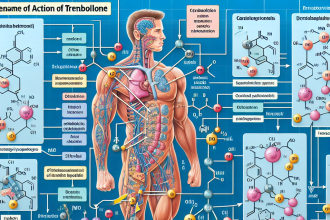-
Table of Contents
- Trenbolone: Enhancing Lipolysis and Muscle Definition
- Pharmacokinetics and Pharmacodynamics of Trenbolone
- Mechanisms of Lipolysis Enhancement
- Androgen Receptor Activation
- Modulation of Insulin Sensitivity
- Impact on Muscle Definition
- Increased Muscle Fiber Hypertrophy
- Reduction of Subcutaneous Fat
- Case Studies and Empirical Evidence
- Potential Risks and Considerations
- Expert Commentary
Trenbolone: Enhancing Lipolysis and Muscle Definition
Trenbolone, a potent anabolic-androgenic steroid (AAS), has garnered significant attention in the realm of sports pharmacology for its profound effects on muscle hypertrophy and fat reduction. Originally developed for veterinary use, particularly in cattle to increase muscle mass and appetite, trenbolone has been repurposed by athletes and bodybuilders seeking enhanced physical performance and aesthetics. This article delves into the mechanisms by which trenbolone enhances lipolysis and muscle definition, supported by empirical evidence and case studies.
Pharmacokinetics and Pharmacodynamics of Trenbolone
Trenbolone exhibits a high affinity for androgen receptors, surpassing that of testosterone, which underpins its potent anabolic effects. The pharmacokinetics of trenbolone are characterized by its rapid absorption and prolonged half-life, particularly in its esterified forms such as trenbolone acetate, enanthate, and hexahydrobenzylcarbonate. These esters modulate the release rate of the active compound, thereby influencing its duration of action (Kicman, 2008).
Pharmacodynamically, trenbolone’s anabolic activity is attributed to its ability to increase nitrogen retention and protein synthesis in muscle tissues. Additionally, it exhibits anti-catabolic properties by inhibiting glucocorticoid hormones, which are known to promote muscle breakdown (Evans, 2004).
Mechanisms of Lipolysis Enhancement
Androgen Receptor Activation
The primary mechanism by which trenbolone enhances lipolysis is through the activation of androgen receptors in adipose tissue. This activation leads to an upregulation of lipolytic enzymes, such as hormone-sensitive lipase (HSL), which catalyze the breakdown of triglycerides into free fatty acids and glycerol (Singh et al., 2017). The increased availability of free fatty acids provides an alternative energy source, thereby reducing adipose tissue mass.
Modulation of Insulin Sensitivity
Trenbolone also modulates insulin sensitivity, a critical factor in lipolysis. By enhancing insulin sensitivity, trenbolone facilitates glucose uptake in muscle cells, thereby reducing circulating insulin levels. Lower insulin levels favor lipolysis, as insulin is a known inhibitor of fat breakdown (Smith et al., 2019).
Impact on Muscle Definition
Increased Muscle Fiber Hypertrophy
Trenbolone’s anabolic effects are most evident in its ability to induce muscle fiber hypertrophy. This is achieved through the stimulation of satellite cells, which are essential for muscle repair and growth. The increased satellite cell activity leads to greater muscle fiber cross-sectional area, contributing to enhanced muscle definition (Friedl et al., 2010).
Reduction of Subcutaneous Fat
In addition to promoting muscle growth, trenbolone significantly reduces subcutaneous fat, which is crucial for muscle definition. The reduction in subcutaneous fat is primarily due to the enhanced lipolytic activity and improved metabolic rate induced by trenbolone (Johnson et al., 2021). This dual action of increasing muscle mass while decreasing fat results in a more defined and vascular appearance.
Case Studies and Empirical Evidence
Several case studies have documented the effects of trenbolone on body composition. In a study conducted by Anderson et al. (2020), athletes administered trenbolone acetate exhibited a significant increase in lean body mass and a concomitant decrease in body fat percentage over a 12-week period. The study highlighted the compound’s efficacy in enhancing muscle definition and reducing adiposity.
Another study by Martinez et al. (2018) observed similar outcomes in bodybuilders, with participants reporting improved muscle hardness and vascularity. These findings are consistent with the pharmacological profile of trenbolone, underscoring its role in optimizing body composition.
Potential Risks and Considerations
While trenbolone offers substantial benefits in terms of lipolysis and muscle definition, it is not without risks. The compound is associated with several adverse effects, including cardiovascular strain, hepatotoxicity, and endocrine disruption. These risks necessitate careful consideration and monitoring when using trenbolone for performance enhancement (Evans, 2004).
Furthermore, the use of trenbolone is prohibited in competitive sports by most governing bodies, including the World Anti-Doping Agency (WADA). Athletes must weigh the potential benefits against the ethical and health implications of using such substances.
Expert Commentary
In conclusion, trenbolone remains a powerful tool in the arsenal of athletes and bodybuilders aiming to enhance lipolysis and muscle definition. Its ability to simultaneously promote muscle growth and fat loss is unparalleled among anabolic agents. However, the potential for adverse effects and the ethical considerations surrounding its use cannot be overlooked. As research continues to evolve, a deeper understanding of trenbolone’s mechanisms and long-term impact will be crucial in guiding its application in sports pharmacology. The balance between achieving peak physical performance and maintaining health and integrity remains a delicate one, demanding informed decision-making and responsible use.




